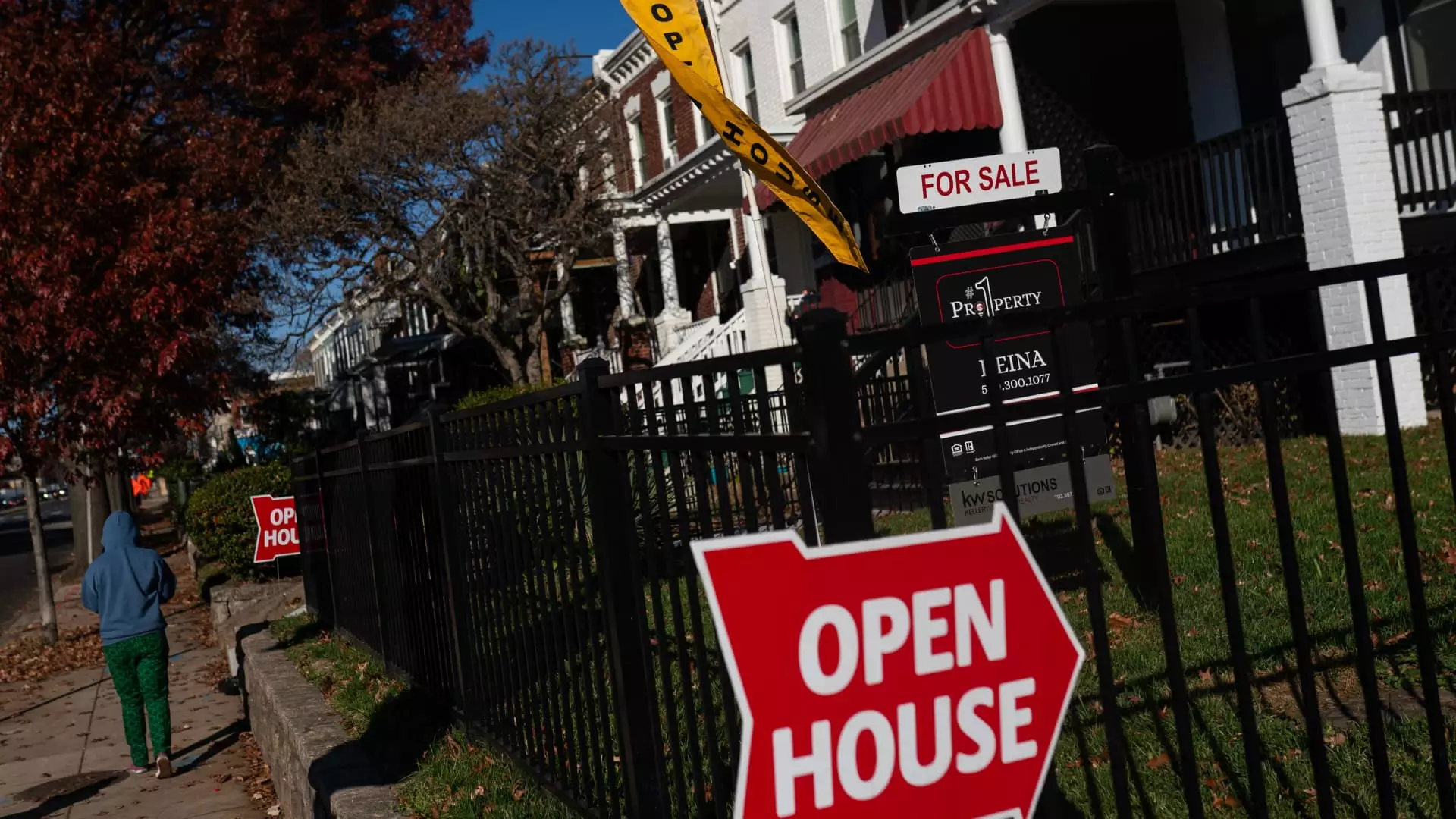Mortgage demand is experiencing a troubling retreat, a situation that calls for deep concern among potential homebuyers and industry stakeholders alike. Last week marked a significant downturn, as mortgage application volume nosedived by 6.2% according to the Mortgage Bankers Association—a stark indicator of a cooling housing market. This pullback can be directly linked to rising mortgage rates and a looming sense of economic uncertainty, both of which cast a shadow over the housing landscape.
The average rate for a 30-year fixed mortgage climbed to 6.72%, a spike that we haven’t seen in nine weeks. With points also ramping up, borrowers are finding their purchasing power curtailed, leading to a hesitance that could stifle market momentum. This steep rise contrasts sharply with last year’s rates, which were a staggering 25 basis points lower, creating a formidable barrier for those considering a mortgage. It’s a worrying trend that prompts reflection on whether this is merely a temporary fluctuation or a sign of a more prolonged decline.
Refinancing: A Dwindling Opportunity
The refinancing landscape paints an equally disheartening picture. Applications to refinance a home fell a substantial 13% last week, despite being 70% higher than the same week last year. The seeming paradox is explained by the fact that many homeowners have already capitalized on historically low rates from just a few years ago, leaving a limited pool of individuals who stand to benefit from current refinancing opportunities. Those who missed the boat are now left clutching at straws as rates inch upward, creating a frustrating situation for many homeowners and altering the dynamics of the market.
Indeed, the narrowing margin for refinancing is hardly an isolated incident—it’s symptomatic of broader economic concerns. As uncertainty hangs in the air, many potential buyers are sitting on the fence, weighed down by worries about the future of interest rates and overall market stability. This shrinking confidence suggests that mortgage applications are likely to continue their downward trajectory unless conditions shift dramatically for the better.
Home Buying in a Stagnant Market
Interestingly, applications for new home purchases have barely budged, up just 0.1% week-to-week. Yet, compared to last year, there is a 6% uptick, fueled primarily by increased FHA purchase applications. This tepid increase could be misleading, as it doesn’t symbolize a revival in buyer enthusiasm but rather a cautious approach to a market still rife with challenges. The growing inventories and steadier rates provide a semblance of stability, but whether that’s enough to encourage widespread homebuying remains to be seen.
As the market approaches what might be a pivotal moment, the slightest whispers from the Federal Reserve about interest rates could spell either salvation or further despair for the housing sector. The ongoing fluctuations in mortgage rates have strained what was once a vibrant segment of the economy, leaving many to wonder if we are witnessing the beginning of a rather protracted lull in homepurchase enthusiasm.
In these turbulent times, it becomes essential for policymakers to find a balance that promotes economic growth while making housing accessible. As mortgage demand falters, an aggressive approach to stimulating the market should be considered imperative. Yet history teaches us that quick fixes are rarely sustainable; we must be vigilant and ensure that any measures taken do not lead us into further treacherous waters.


Leave a Reply